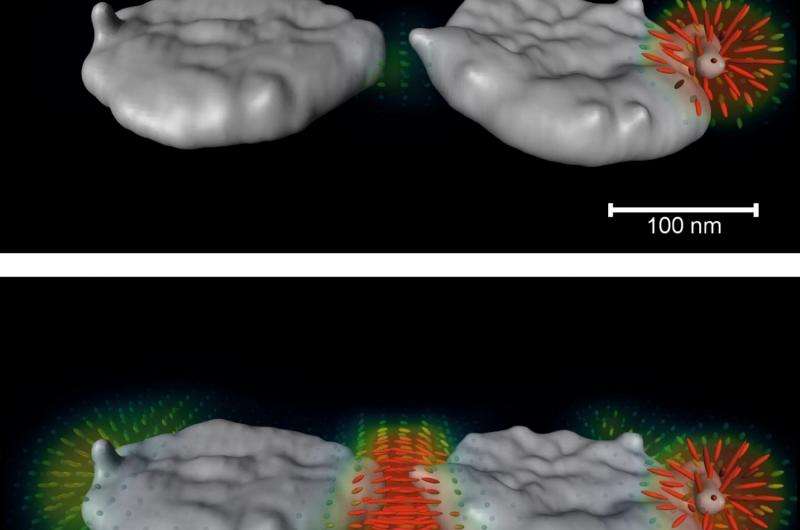Researchers measure light fields in 3-D

Researchers from TU Graz and the University of Graz present the new method of 3-D-plasmon tomography in Nature Communications.
Light as a carrier of information is indispensable to modern communication technology. The controlled manipulation of light quanta, so-called photons, form the basis for wireless transmission or data transfer in optical glass fibres. Due to the wave-like nature of light and its diffraction limit, however, optical components can only focus light down to the micron scale (10-6 m). Ulrich Hohenester from the Institute of Physics at the University of Graz explains: "To enable photons and nanostructures to interact more efficiently, in the research field of plasmonics, we couple light onto a metallic nanoparticle, typically made out of gold or silver." Depending on size, shape, environment and material, resonating clouds of electrons are formed – so-called surface plasmons. Hohenester continues: "This collective electron vibration enables us to focus light at the nano scale and so use a variety of applications in sensor technology and photovoltaics."
Imaging plasmon fields
The direct observation of plasmon fields is only possible thanks to Austria's most powerful electron microscope – the ASTEM, Austrian Scanning Transmission Electron Microscope, at the Graz Centre for Electron Microscopy. In the last few years, electron microscopy has developed into an ideal method for measuring plasmon fields. Gerald Kothleitner, head of the Working Group for Analytic Transmission Electron Microscopy at TU Graz's Institute of Electron Microscopy and Nanoanalysis, elaborates: "A high-energy electron beam moves near the sample or penetrates it. Electrons in the vicinity of the sample experience a loss of energy, something we can measure spectroscopically. This results in two- dimensional images of plasmon fields at sub-nanometre resolution. Information about the third dimension along which the electrons move is lost in this method."
Breakthrough in 3-D
In the present work which has been published in the open access journal Nature Communications, the NAWI Graz researchers could show for the first time how the third dimension can be reconstructed completely in the framework of a tomographic imaging process by rotating the sample and processing a series of tilted two-dimensional projections. This method works similarly to the computer tomography used in medicine and appropriately bears the name 3-D-plasmon tomography. Kothleitner and Hohenester on the effects of their successful research: "By using this novel method it is now possible to measure plasmon fields in a way that will help better understand applications in the fields of sensor technology, solar cell technology and computer storage or even lead to new ones."
More information: Anton Hörl et al. Tomographic imaging of the photonic environment of plasmonic nanoparticles, Nature Communications (2017). DOI: 10.1038/s41467-017-00051-3
Journal information: Nature Communications
Provided by Graz University of Technology





















